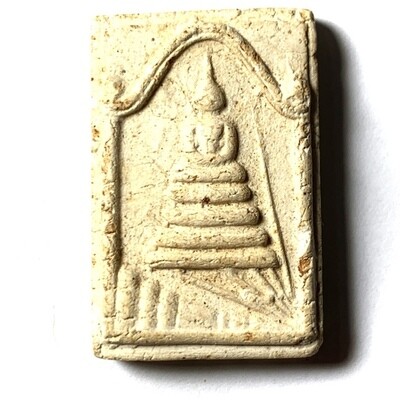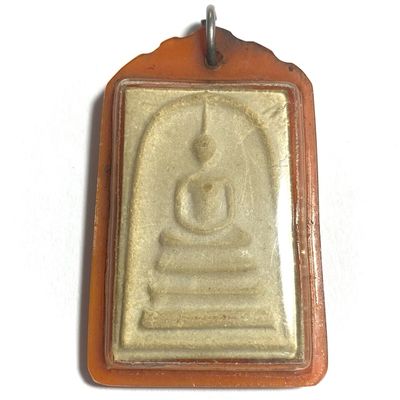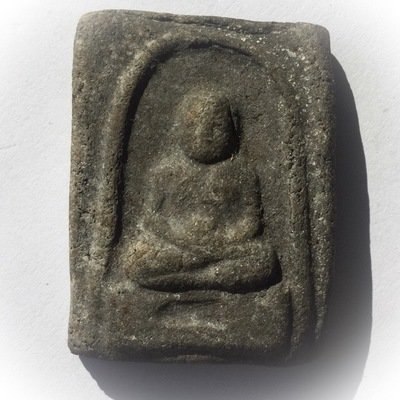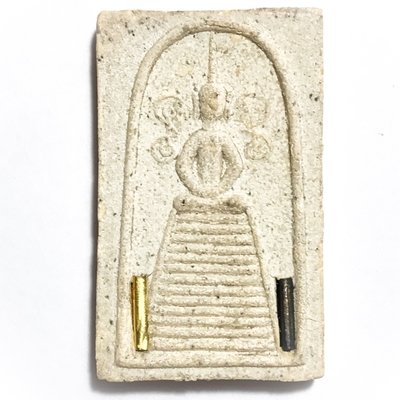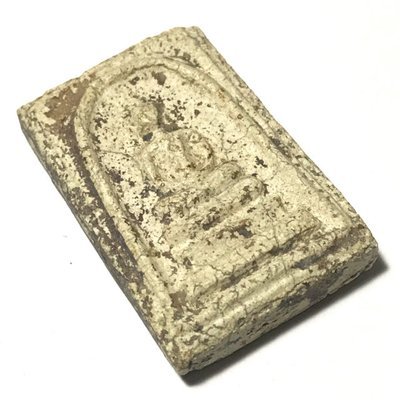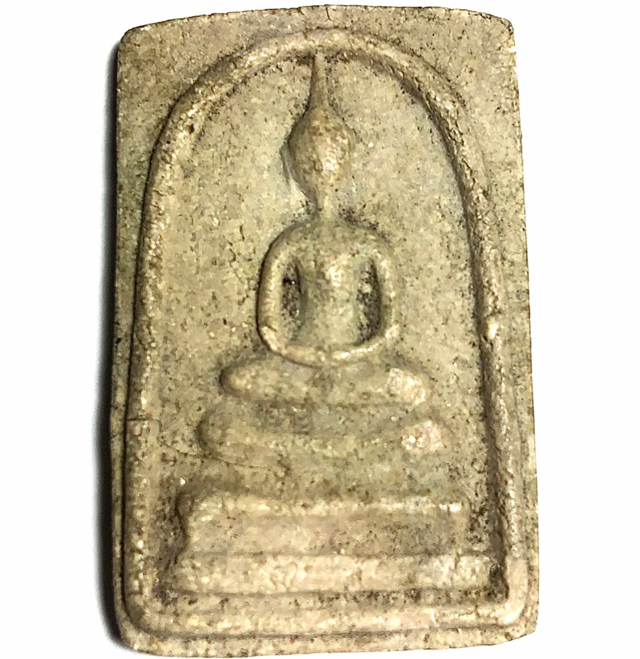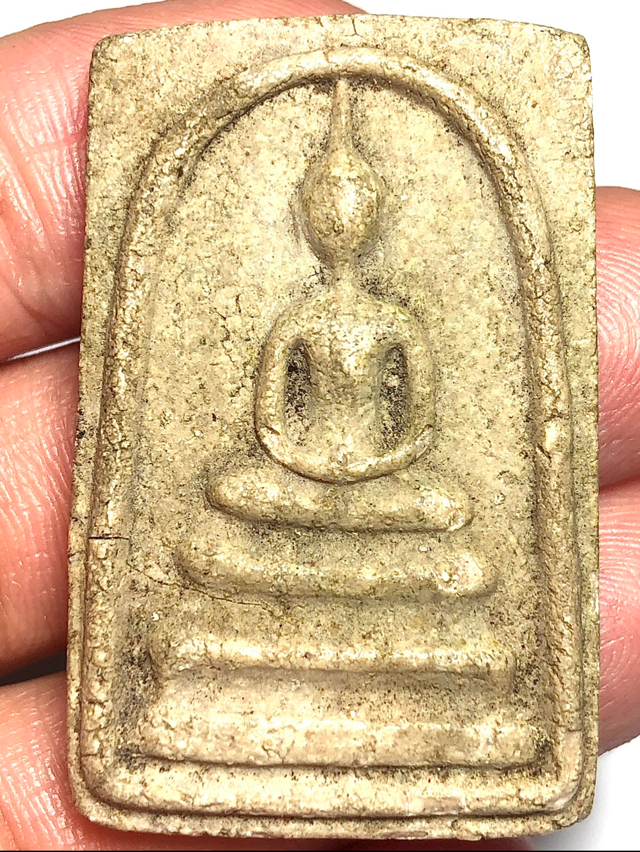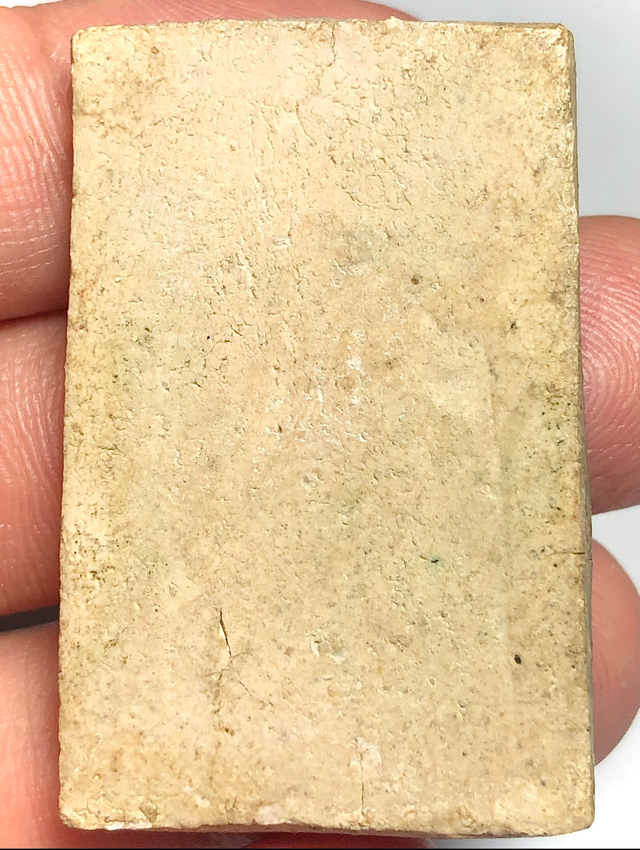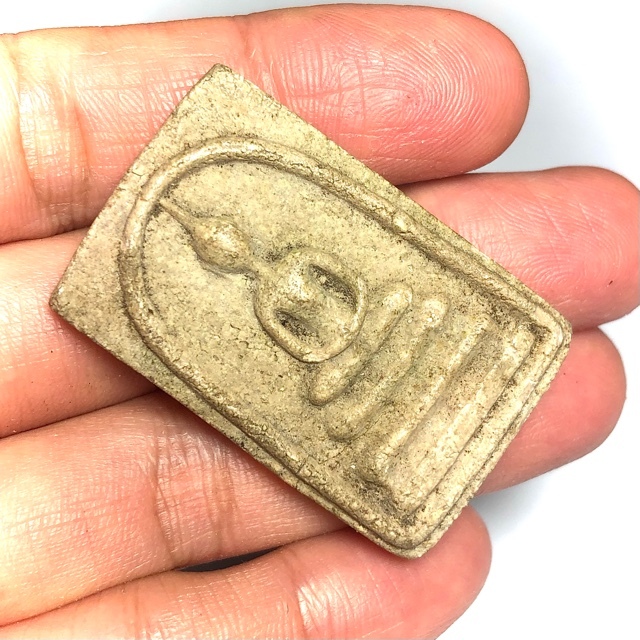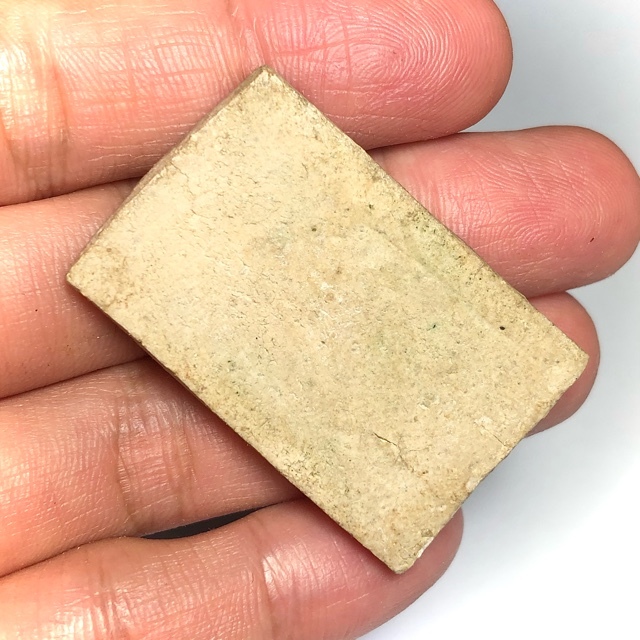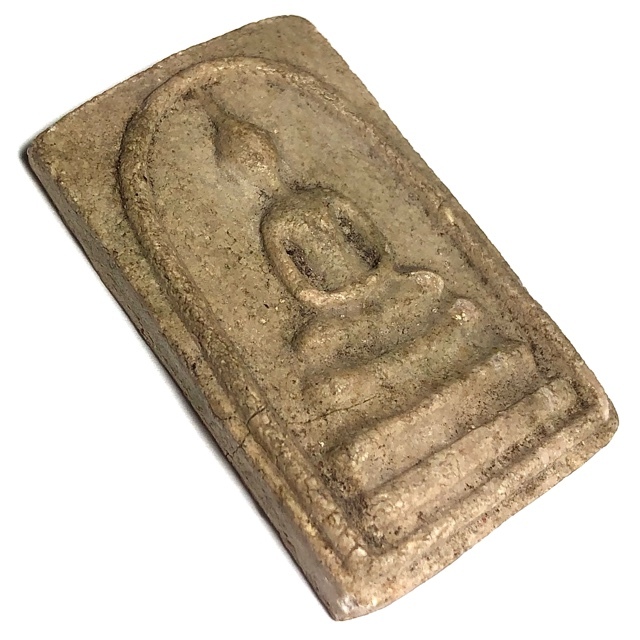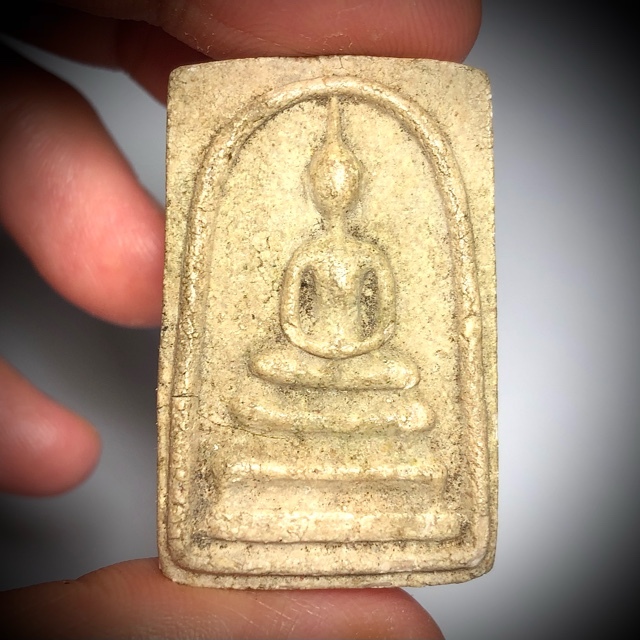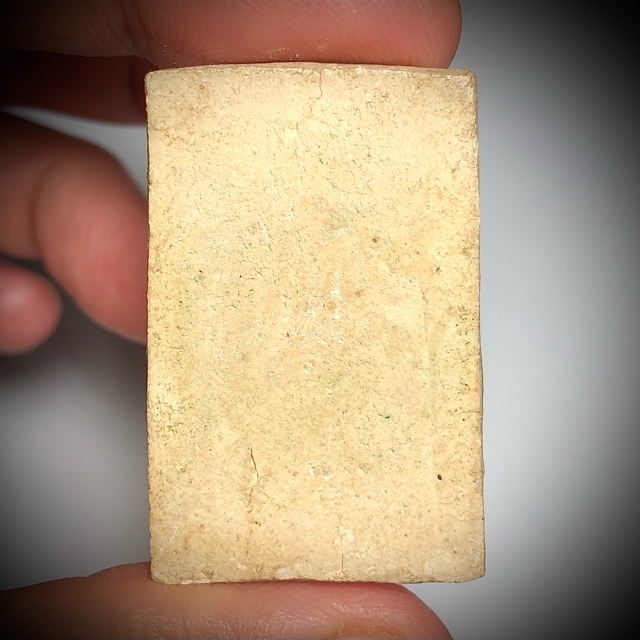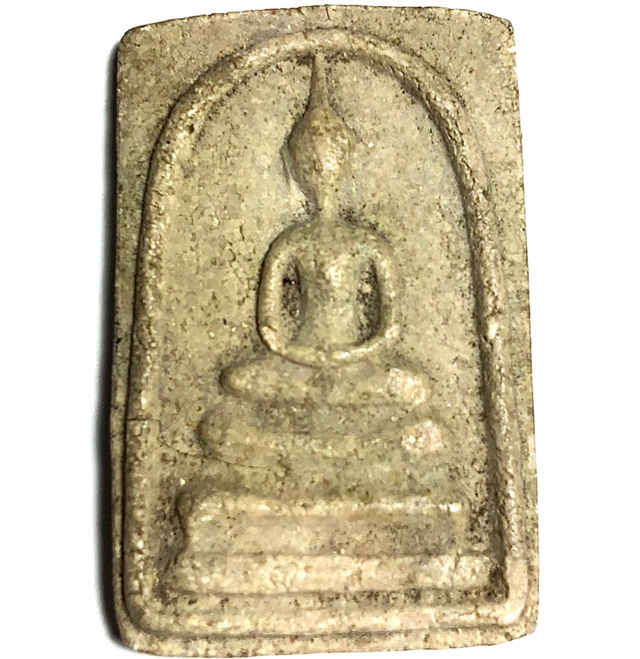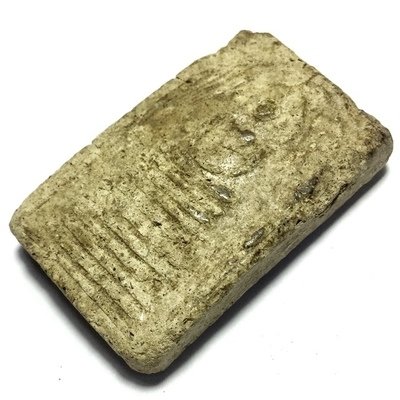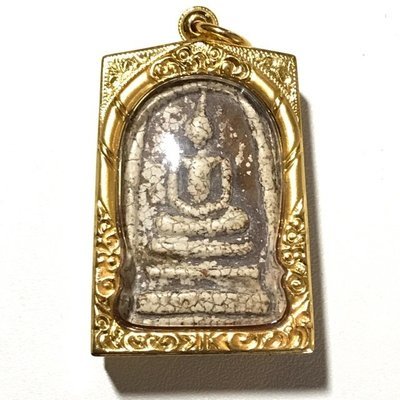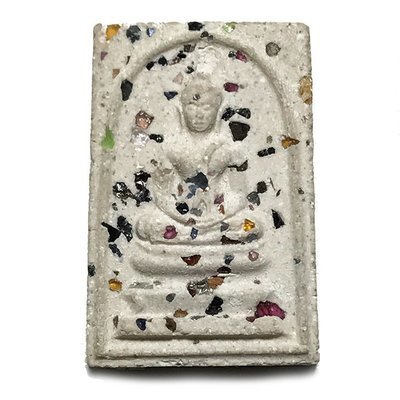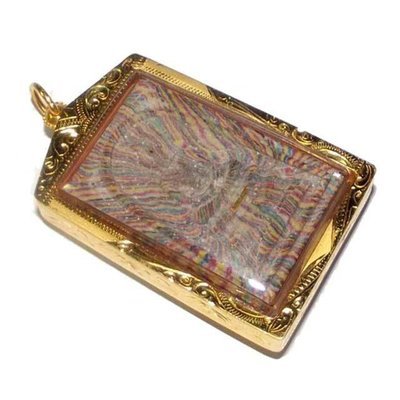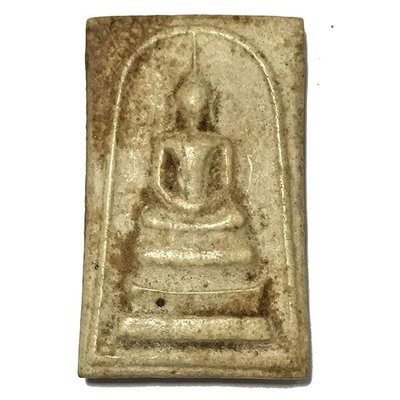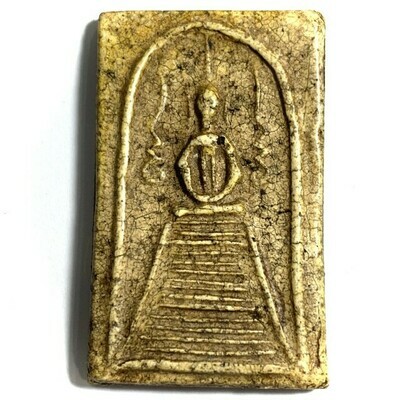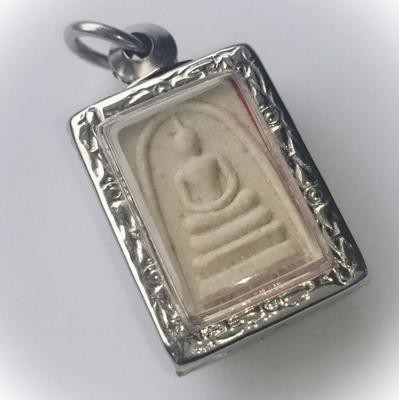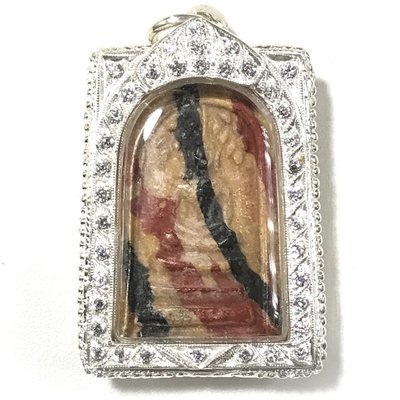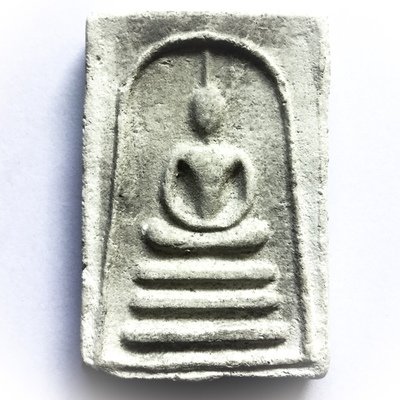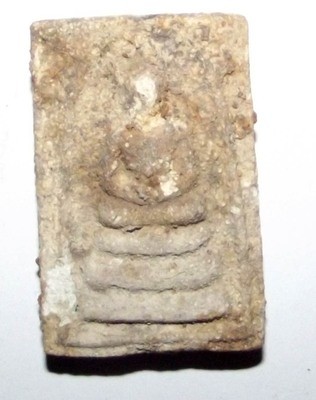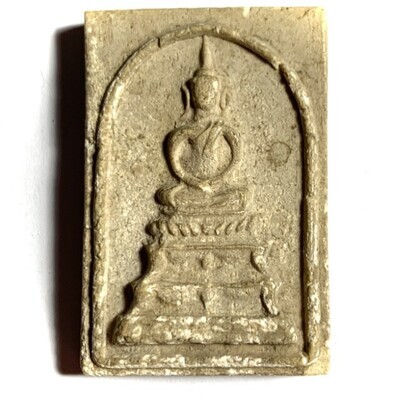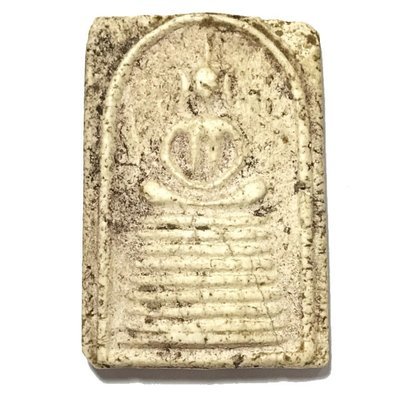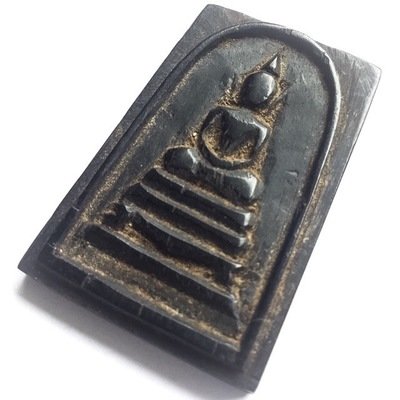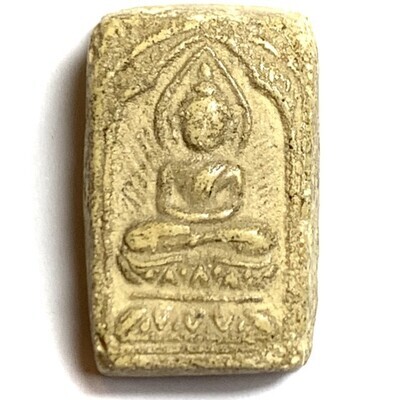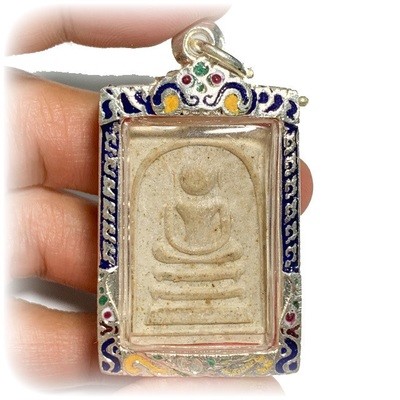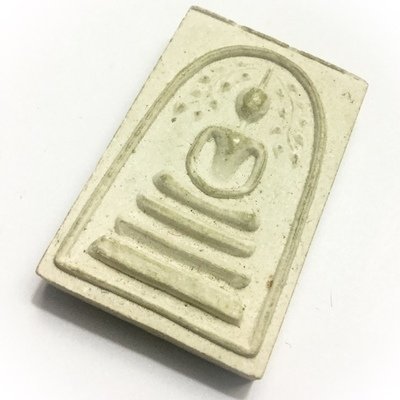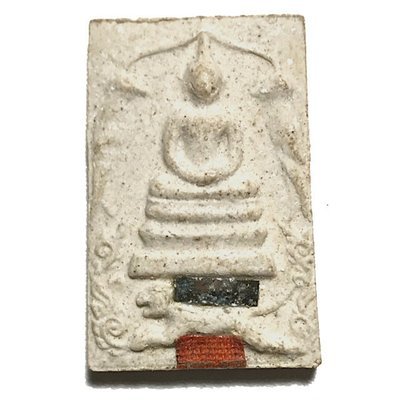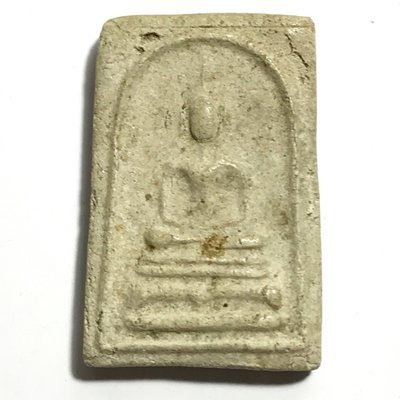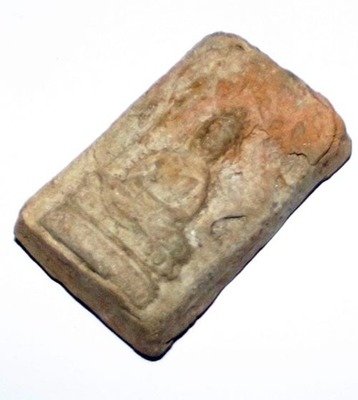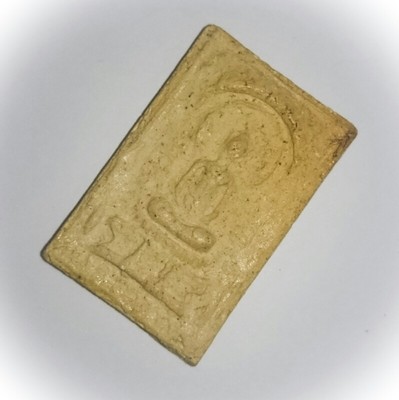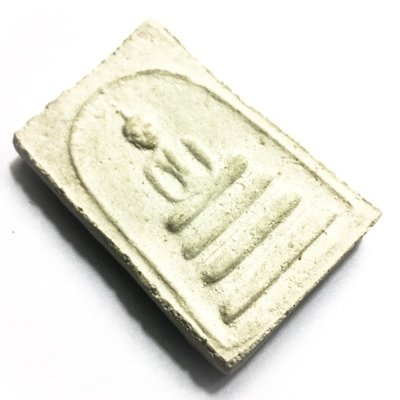Presenting a tiny but powerful and rare classic amulet from one of the Great Khao Or Masters of the 20th Century, Rian Glom Lek Hlang Chedi 2505 BE Nuea Tong Daeng Miniature Guru Monk Coin Por Tan Klai Wajasit
This Sacred amulet of the Great Khao Or Master of Nakorn Sri Tammarat, Master of Wat San Khan and Wat Pratat Noi, is a very rare amulet from Por Tan Klai’s 2505 BE Blessing Ceremony Edition, and is considered a ‘Jaek mae Krua’ type amulet (meaning ‘give to the kitchen maids and temple helpers’), which is suitable not only for men, but due to its miniature size, a perfect amulet for ladies or children to wear.

Rian Glom Lek 2505 BE Por Tan Klai Wajasit Wat Suan Khan
The 2505 BE edition of amulets of Por Tan Klai, is a highly preferred edition, which saw his famous ‘Rian Glom’ round Monk coin amulet with Chakra released, The Rian Glom Lek Hlang Chedi, and the Roop Tai Por Tan Klai Guru Monk Blesséd Photographamulets such as look om chan hmak and ya sen tobacco balls, and sacred powder amulets of various models.
A very rare and highly prized amulet for the devotees of Por Tan Klai to associate with his image and pray to him with a blessed image of the Guru, and the Chedi Relic Stupa on rear face for Buddhanussati and Marananussati. A powerful and Sacred amulet which has passed through the hands of the Guru and been blessed by him.
Por Tan Klai was one of the Top Guru Master Monks of the Last Century, and is considered one of the Four Great Masters of the Previous Generation of Lineage Masters of the Khao Or Southern Sorcery Lineage.
Kata Bucha Por Tan Klai
Pra Somdej 3 Chan 2512 BE Luang Por Noi Wat Dhamma Sala
Presenting a very rare and well preserved exhibit of the Pra Somdej 2512 BE Edition, from the Great Luang Por Noi of Wat Dhamma Sala, in Nakorn Pathom, from 2512 BE, for Klaew Klaad & Kong Grapan Chadtri Protection, Maha Lap Lucky Fortunes, Serm Duang Karma Improvement, and of course, Guru Worship of The Buddha, and this Great Master Monk of Yesteryear.
The Pra Somdej is a Pim Yai Sam Chan Niyom, in Nuea Pong Ittijae, and was blessed by Luang Por Noi in 2512 BE, and is a rare opportunity to have a magical tool of connection with the Guru, in such pristine condition.
The rear face of the amulet reveals true age and authenticity; the surface is highly porous in texture, and has developed the surface sheen that is ubiquitous with Muan Sarn Pong Ittijae, highly recognizable for its age, and is one of the reference points for identification and age estimation of the amulet.
Biography of Luang Por Noi (Wat Dhamma Sala)
Luang Por Noi was a resident of Dhamma Sala Municipality from birth. He was born in the 12th May 2426 BE, as the son of Mr. Saeng, and Mrs. Orn. When he was still a very young child, his father took him to the temple, and he spent most of his childhood years learning to read and write and other schooling, with Luang Por Nuam, the Abbot of Wat Dhamma Sala.
When he reached the age of 15, he ordained as a Samanera Novice monk at the temple of Wat Sam Graber Phueak. Luang Phu Noi would constantly travel between his temple and the temple of Wat Dhamma Sala where he had grown up during his childhood under tutelage of Luang Por Nuam.
After some time, Luang Por Noi's Mother became old and weak, and he disrobed to help her at work, as she was having difficulty. When his mum retired and he reached the age of 20, he re-ordained at Wat Dhamma Sala, on the 28th May 2446 BE.
Pra Atigarn Luang Por Tong, of Wat Lamud was his Upachaya Ordaining Officer, with the Abbot of Wat Dhamma Sala as his Gammawajajarn. , and Luang Por Saeng of Wat Mai, was his Pra Anusawanajarn (Witness). He recieved the Ordained Pali name of 'Intasaro', and was from then on truly known as Luang Por Noi Intasaro.
After his second Ordination, this time as fully fledge Bhikkhu in the Buddha Sasana, he began to study and practice the Dhamma Vinaya Buddhist Canon of Ordained Life with great exertion and diligence. He also began to beseech and study the practice of Wicha Akom Buddha Magic with many great Masters of the time, including Luang Por Tong of Wat Lamud, Luang Por Nuam his old Kroo Ba Ajarn of Wat Dhamma Sala, Luang Por Jaeng, Luang Por Saeng, and many other great Masters.
He was able to absorb and master the many spells and formulas of the Wicha given to him, because he had learned how to read and write the Sacred Khom Agkhara script since a very young age with Luang Por Nuam. Luang Por Noi's powers and abilities to enter deep Medidative States became highlyt adept, and his prowess soon came to be known by his Mentors, who gave him ever increasingly difficult to Master Wicha, which he seemed to absorb instantly and Master with ease.
Luang Por Noi was known for his well kept and diligent manner of self conduct, and restraint, and that he would never let his watchfulness of his own behaviour slip, always remaining within the rules of Ordained Monks, with mild manners and compassionate openness. He became a symbol of faith for the local devotees of the Province.
He showed compassion to animals in need, and liked to seek solitude and silence, remaining in the peace of stillness, which he radiated outwards to those in his presence, stilling the troubled hearts and bringing them some peaceful respite from their daily sufferings.
In the year 2495 BE, Luang Por finished the construction project for the public primary school building of Wat Dhamma Sala for the local children to get some education. In 2501 BE, Luang Por built the Uposatha Shrineroom.
Luang Por Noi built a concrete bridge for local market traders and folk to travel across the river easily and save them many miles of traveling distance. This improved the trade and economy of the municipality greatly, for which the local folk became ever more filled with faith for Luang Por Noi.
In 2505 BE, Luang Por built a second school building for secondary school education. In 2510 BE, Luang Por built a Chapana Sathan Funeral Crematory for the local folk at the temple, and in the year 2511 BE, he finished the building of a Kuti Songk Sangha Dormitory Building. In 2512 BE, Luang Por Noi funded the construction of a new Hor Rakang (Temple Bell-House).
The Amulets of Luang Por Noi of Wat Dhamma Sala, are amongst the top 5 of all time Great Masters of Nakorn Pathom Province.
When one considers that Nakorn Pathom has produced many of the greatest masters of the last century, and that the amulets of Nakorn Pathom Masters are of the most collected and sought after by amulet aficionados. It is then obviously difficult to achieve such a high ranking as that of Luang Por Noi. We can safely say that the pantheon of amulets of Luang Por Noi is amongst the most highly sought after of all.
Two Luang Por Nois in One Province
One curious fact is that Nakorn Pathom Province enjoys having had two famous Guru Monks with the name of Luang Por Noi, both of whom are extremely famous for their amulets. This sometimes causes confusion with students of amulets who are still developing their knowledge, and so we define who is who here, for your information;
Luang Por Noi of Wat Dhamma Sala, and Luang Por Noi of Wat Srisa Tong, are both Masters of Nakorn Pathom Province. Both Masters have enjoyed similar fame and recieved the same great respect from their faithful devotees.
Luang Por Noi of Wat Dhamma Sala was often invited to the most important Buddha Abhiseka blessing ceremonies because of his great prowess in empowering amulets. He had (and still has to this day) a large following of devotees, who sought his protection and blessings. But Luang Por Noi did not officially make an edition of amulets, until the year 2494 BE, when a large number of devotees gathered and asked Luang Por for permission to bless a series of coin amulets, to distribute to his devotees to worship with.
Luang Por Noi was approached and asked, but in truth, he did not reply, and remained silent. This however was taken as a yes by the devotees, who then commissioned am artisan to create a design for the coins, with the image of Luang Por Noi, within a Sema (shield shaped) coin.
The first edition coin had a cameo image of Luang Por Noi (head and shoulders) on the front face, with the words 'Luang Por Noi. The rear face had the Yant Na Bpathamang.
This first edition coin is less known by common people as the later released Rian Hnaa Suea, which in itself is a very rare and expensive amulet (reaching into the 2-3000$ range in good condition), but it is this Rian Sema 2494 BE which is in truth the first edition he ever made, and is even rarer, and can often fetch an even higher price than the Rian Hnaa Suea.
Below: Rian Hnaa Suea Luang Por Noi
Above : Rian Hnaa Suea Luang Por Noi
